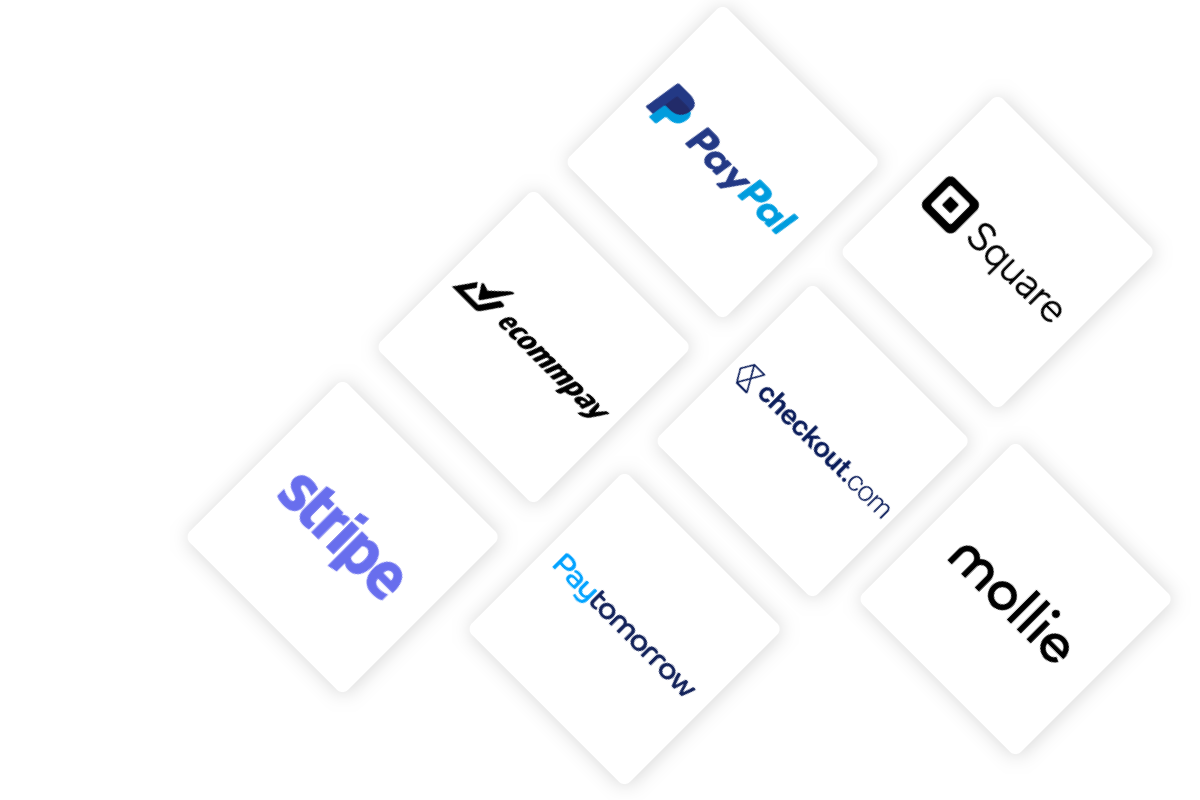Our Payment Links are different
Use your Payment Gateway
Use Multiple Payment Gateways/Methods
Not tied to any product, invoice or amount

Pre-authorize, capture payment or save a card
For SaaS platforms, payments have shifted from being a “nice-to-have” feature to a must-have expectation. Whether you’re building invoicing software, reservations systems, customer service platforms, or debt collection tools, your merchants increasingly want to accept payments natively within your product.
But here’s the dilemma: building a payment link feature from scratch is slow, complex, and drains precious engineering resources. Most platforms estimate 6–12 months for a full payment integration, which means by the time you deliver, you’ve already lost prospects to competitors.
There is a faster way. With the right approach, SaaS platforms can launch a fully branded payment link feature in weeks, not months — without diverting product teams away from core features.
Why Payments Can’t Wait
Merchants don’t think of payments as optional. For them, it’s an operational necessity. If your SaaS platform can’t support their preferred payment processor, they will:
Choose a competitor who can.
Stick with their manual processes.
Or delay adoption until you “catch up.”
In all three cases, you lose growth momentum.
This is especially true in vertical SaaS segments:
Invoicing software → Clients expect to get paid directly via the invoice link.
Reservations & CX platforms → Payments need to happen during the booking or conversation.
Debt collection platforms → Customers want seamless settlement with their PSP of choice.
Without a payment link feature, you risk becoming a partial solution — one that merchants outgrow.
Why Building from Scratch Is a Trap
On paper, building a native payment link feature seems straightforward: connect to a PSP, generate links, embed them in workflows.
In reality, it’s a product sinkhole:
Integration complexity: Each PSP has different APIs, requirements, and quirks.
Compliance burden: PCI DSS, PSD2, SCA, GDPR — all must be considered.
Maintenance overhead: Every time a PSP updates its API or compliance rules, you have to update too.
Merchant diversity: One PSP isn’t enough; larger merchants insist on using their existing processors.
Roadmap impact: Every new PSP integration takes 3–6 months, diverting engineers from your core product.
For product leaders, this creates a lose–lose situation: either delay features to build payments, or lose deals by not offering them.
Enter the Payment Processor Aggregator
The alternative is integrating once with a payment processor aggregator, sometimes called a multi-gateway connector. Instead of building one-to-one PSP integrations, you connect to an aggregator like Shuttle and instantly unlock 40+ PSPs worldwide.
That means you can offer your merchants:
Their preferred PSPs (from Stripe to Adyen, PayPal to Worldpay).
Regional options (SEPA, ACH, local acquirers).
Flexible rules for when and how payment methods appear.
And you, as the SaaS provider, don’t carry the burden of maintaining dozens of separate integrations.
Payment Links: The Fastest Path
Among all the ways to embed payments, payment links are the fastest and most versatile for SaaS platforms:
Hosted and branded → Each merchant gets a payment page styled to their brand.
Multi-channel → Links can be shared via email, SMS, chatbots, or voice agents.
Workflow-ready → Easy to embed in invoices, reservations, debt settlement flows, and customer service processes.
Checkout Rules → Merchants can define conditions such as:
“For transactions over $10k, only show ACH.”
“For EUR transactions, show SEPA instead of cards.”
“For under £20, only show card payments.”
This flexibility means payment links don’t just help merchants get paid — they enhance operational control, compliance, and customer experience.
A Typical SaaS Example
Consider a mid-sized SaaS platform in the invoicing space. Their customers are asking for payment links to be embedded directly into invoices. The product team knows they need the feature but is stuck:
Building directly to a PSP like Stripe would take months and only solve part of the problem.
Adding support for multiple PSPs would multiply development time and delay other product priorities.
By using a multi-gateway connector, the invoicing platform can:
Launch a branded payment link feature in 2 weeks, not months.
Offer 40+ PSPs to merchants instantly.
Allow merchants to set checkout rules to govern how payments appear.
Keep engineers focused on their core product improvements.
The difference is clear: instead of waiting months to add a critical feature, the platform goes to market quickly, wins deals, and retains merchants.
The Roadmap Win for Product Leaders
For Heads of Product and VPs of Product, the biggest win is not just speed — it’s focus.
By outsourcing payments complexity to a multi-gateway connector:
Your roadmap stays clear for strategic features.
Your engineering team avoids endless PSP backlogs.
Your merchants get the connectors they demand — instantly.
It reframes payments from being a roadmap blocker to being a growth enabler.
Closing the Competitive Gap
Let’s be clear: adding payments isn’t just about monetisation. It’s about defensibility.
Every time a prospect hears “no, we don’t support your PSP,” you risk losing them to a competitor. In a crowded SaaS market, PSP coverage is often the small but decisive differentiator that wins or loses a deal.
By launching a payment link feature in weeks with Shuttle, you eliminate that risk. You can say “yes” to every merchant PSP request — without slowing your roadmap.
Final Thought
SaaS growth depends on speed. Your merchants can’t wait six months for a payment link feature, and you can’t afford to lose them to a competitor who already has one.
The answer isn’t to build more, it’s to aggregate smarter. With Shuttle’s Payment Links for Platforms, you can launch branded, rule-based, multi-gateway payment links in weeks, not months — and keep your product roadmap moving.



